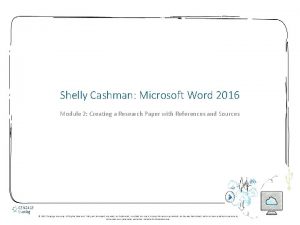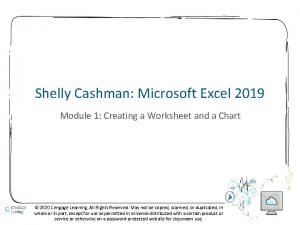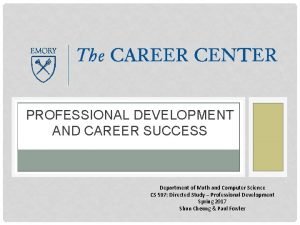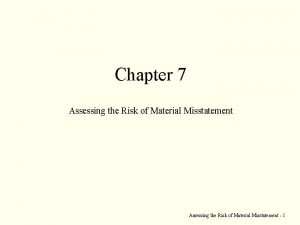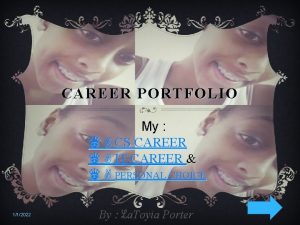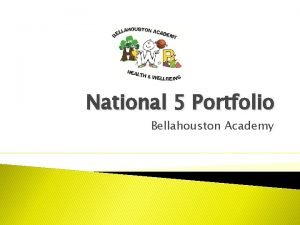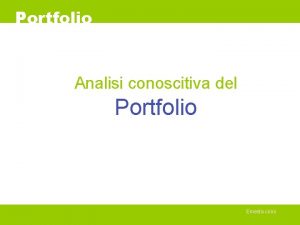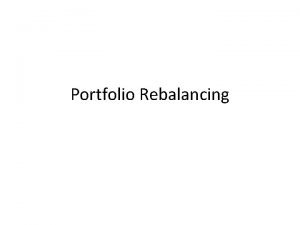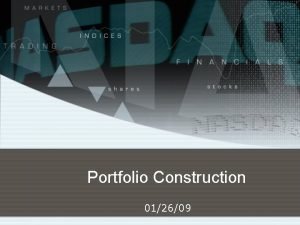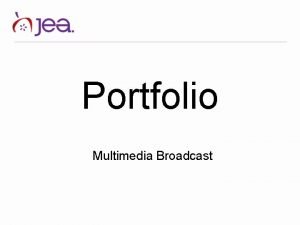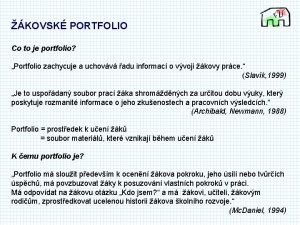Creating a Career Portfolio Module 1 Assessing Career












- Slides: 12


Creating a Career Portfolio Module 1: Assessing Career Interests

Assessing Career Interests Skills and Interests Self-Assessment The Birkman Method Dr. John Holland’s Theory What is My ‘Dream’ Job?

Skills and Interests Self-Assessment What do you want to do when you graduate from high school?

Skills and Interests Self-Assessment • What are your current interests and hobbies? • What skills or special talents do you have? • What kind of work would you most like to do? • Do your skills and interests influence your life and school decisions? • Where could you obtain information related to job possibilities and career interests?

The Birkman Method A self-assessment theory that identifies job seekers by: • Interests: – Types of work activities one is drawn to • Styles: – Kind of work environment that improves one’s performance

The Birkman Method Interests and Styles are color-coded: Blue: Planning Green: Communicating Red: Expediting Yellow: Administrating

The Birkman Method Interests Blue creative, innovative, humanistic, thoughtful; Green persuasive, selling, promotional; prefers to Red practical, technical, hands-on, organized Yellow organized, detail-oriented; likes to work with numbers or systems plans activities, deals with abstraction counsel or teach, motivate people

The Birkman Method Styles Blue Green orderly, cooperative, consistent, cautious, people-oriented and utilizes indirect communication competitive, commanding, forceful, outspoken, independent; likes to be people oriented and utilize direct communication Red task-oriented and likes to utilize direct Yellow sociable, task oriented and likes to utilize indirect communication

Holland’s Theory People and their work environments can be classified into 6 different groups: Realistic Investigative Artistic Social Enterprising Conventional

R-I-A-S-E-C Code Practical, hands-on, work with objects, machines, tools R Realistic I Investigative investigate, analyze, evaluate Ideas, thinking, observe, learn, A Artistic Innovative, intuitive, unstructured activities, imaginative, creative S Social Assists others, promote learning, work with people, help train, cure people Enterprising Start up and carry out projects, influence, persuade, lead, manage, decision making E C Conventional Follow set procedures, work with data and details, clerical and numerical abilities

What is My “Ideal” or Dream Job? Essay should include: • Results of the Interest and Style Colors survey (Exercise 1. 1) • Results of the RIASEC interests survey (Exercises 1. 2 and 1. 3) • A compilation of the possible job interests based on the interests survey results (Exercise 1. 3) • Description of the ideal job that is best suited for them, including main responsibilities, locale, job hours, etc.
 Module 4 topic 1 assessing and managing risk
Module 4 topic 1 assessing and managing risk Module 4 topic 1 assessing and managing risk
Module 4 topic 1 assessing and managing risk You are creating in prtu the value fund portfolio
You are creating in prtu the value fund portfolio Word module 2 creating a research paper
Word module 2 creating a research paper Excel module 1: creating a worksheet and a chart
Excel module 1: creating a worksheet and a chart Weebly student portfolio
Weebly student portfolio C device module module 1
C device module module 1 My career portfolio
My career portfolio Fsu career portfolio
Fsu career portfolio Formulas for career success: portfolio development
Formulas for career success: portfolio development Introduction of portfolio
Introduction of portfolio Inherent risk
Inherent risk Chapter 4 cultural dynamics in assessing global markets
Chapter 4 cultural dynamics in assessing global markets



